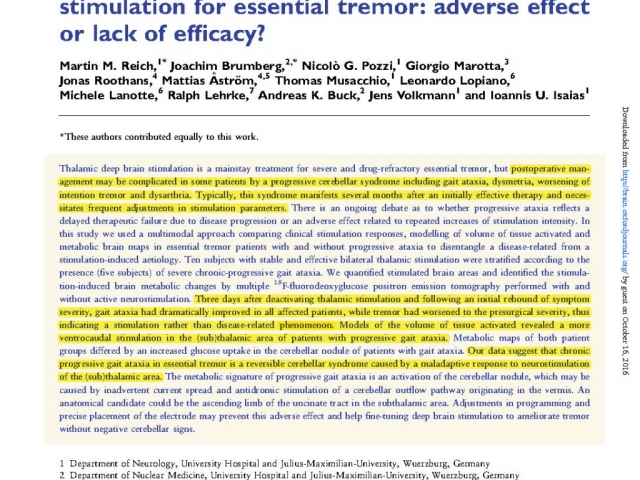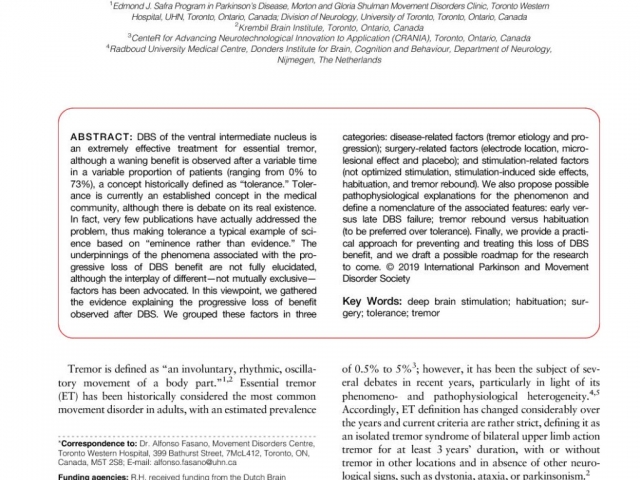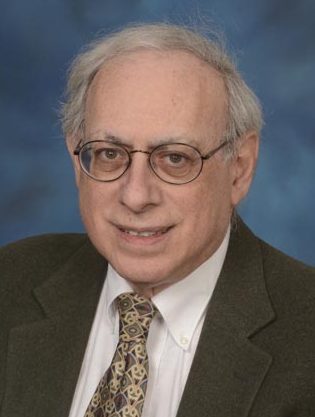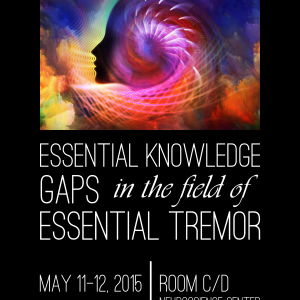INTRODUCTION
We invite you to take part in a research study at the National Institutes of Health (NIH) and Suburban Hospital.
First, we want you to know that:
Taking part in NIH research is entirely voluntary.
You may choose not to take part, or you may withdraw from the study at any time. In either case, you will not lose any benefits to which you are otherwise entitled. However, to receive care at the NIH, you must be taking part in a study or be under evaluation for study participation.
You may receive no benefit from taking part. The research may give us knowledge that may help people in the future.
Second, some people have personal, religious or ethical beliefs that may limit the kinds of medical or research treatments they would want to receive (such as blood transfusions). If you have such beliefs, please discuss them with your NIH doctors or research team before you agree to the study.
Now we will describe this research study. Before you decide to take part, please take as much time as you need to ask any questions and discuss this study with anyone at NIH, or with family, friends or your personal physician or other health professional.
Purpose of This Study
The aim of this study is to better understand activity in particular areas of the brain that might be involved in Parkinson’s disease and Essential tremor, and how the activity may change after deep brain stimulation (DBS) surgery in these disorders.
Facts That Led us to This Study
Previous research has shown what areas of the brain might be involved in symptoms of Parkinson’s disease and Essential tremor. This research has led to the use of DBS to treat these conditions. Some of the brain areas that might not function properly in people with these disorders are also involved in making decisions. To learn more about these brain areas, we will use a test that involves decision making to study brain cell activity before, during and after DBS surgery for these conditions. We will look at brain activity before and after surgery using a technique called magnetoencephalography (MEG). We will look at brain activity during surgery by recording directly from the surface of the brain.
Study Population
6 people with Parkinson’s disease, and 6 people with Essential tremor will participate in this study.
Inclusion Criteria
To be eligible to participate in this study, you must:
- Be at least 18 years old and have been diagnosed with Parkinson’s disease or Essential tremor.
- Be scheduled to have DBS for your condition.
Exclusion Criteria
You may not be eligible for this study if you:
- Have untreated depression or another psychiatric disorder
- Use illegal drugs
- Are pregnant
- Are uncomfortable in small, closed spaces (are claustrophobic)
- Have any metal in your body that would make having an MRI scan unsafe or would interfere with the MRI scan such as: cardiac pacemaker; implanted cardiac defibrillator; aneurysm clip; neuro or bone stimulator; insulin or infusion pump; implanted drug infusion device; cochlear, otologic, or ear implant; prostate radiation seeds; IUD (intrauterine device); transdermal nitroglycerin patch; any type of prosthesis (eye, penile); heart valve prosthesis; shunt (spinal/intraventricular); wire sutures or surgical staples; bone/joint pin, screw, nail, plate; body tattoos or makeup (eyeliner/lip); body piercing that cannot be removed; breast tissue expander; or other metal
Procedures
Study overview:
This study requires 5 study sessions over several months. The first 2 sessions will be in the NIH outpatient clinic before your surgery. The 3rd session will be during your surgery at Suburban Hospital. The 4th and 5th sessions will be at NIH, 3 and 6 months after your surgery.
Study session #1:
During the first study visit, we will ask you about your medical history and perform a neurological examination. Women who are able to get pregnant will have a pregnancy test. You will not be able to participate if you are pregnant. You will also have an MRI scan of your brain. This visit will last about 3 hours.
MRI uses a strong magnetic field and radio waves to take pictures of your brain. The MRI scanner is a metal cylinder surrounded by a strong magnetic field. During the MRI scan, you will lie on a table that can slide in and out of the cylinder. You will be in the scanner about 20 minutes. While in the scanner you will hear loud knocking noises and you will be fitted with earplugs or earmuffs to muffle the sound. You can communicate with the MRI staff at all times during your scan, and you may ask to be moved out of the machine at anytime.
Study sessions #2, #4 and #5:
Study session #2 will be no more than 6 weeks before your surgery. Study session #4 will be 3 months after your surgery, and session #5 will be 6 months after surgery. During each of these visits we will conduct neuropsychological testing that will include standard assessment scales. We will record the activity of your brain using magnetoencephalography (MEG) while you are performing a decision-making task. Each of these sessions will last about 3 hours.
Neuropsychological testing may include tests of your memory, attention, concentration and thinking. We may ask you to be interviewed, complete questionnaires, take pen-and-paper or computerized tests and perform simple actions.
For the decision-making task, you will sit in a chair at a computer. Two symbols will be shown on the computer screen. You will have to choose one of the symbols as quickly as possible by clicking on a mouse button. Choosing one of the symbols will earn you money; the other will cause you to lose money. You will be told if you won or lost money only after you have made your choice. The total amount of money you won will be displayed at the top of the screen. You should try to win as much money as possible. This is a computer game and you will not actually win any payment. The decision making task will take about 30 minutes.
During the task, we will record the electrical activity of two muscles of your right arm using EMG. Small metal disks or sticky pad electrodes will be taped to the skin over the muscles that we choose. The electrodes will be removed after you have completed the task.
MEG is a procedure to record very small magnetic field changes produced by the activity of your brain. During MEG recording, you will be seated comfortably in the MEG recording room and a cone containing magnetic field detectors will be lowered onto your head. The recording will be made while you are seated in front of a computer screen, performing the visual motor reward task.
Study session # 3 (during surgery):
As part of your DBS surgery, the surgeon will need to make holes in your skull to implant the DBS electrodes deep in the brain. For research purposes, during the surgery after the holes have been placed, the surgeon will put a small strip of electrodes on the surface of your brain. The strip of electrodes may be placed on the brain surface on both sides of your brain. The electrodes will be used to record the activity of your brain cells while you are performing the decision making task and while you are resting. The strip of electrodes will be removed after you complete the task. The research part of the surgery will then be over. Placing the strip of electrodes and recording brain activity during the task will add about 30 minutes to your operation. Then the surgeon will complete your DBS surgery.
If you are a patient with Parkinson’s disease or Essential tremor, some of your medications, including Sinemet (carbidopa/levodopa), Stalevo (carbidopa/levodopa/entacapone), Requip (ropinirole) and Mirapex (pramipexole) may interfere with the results of the imaging tests or studies during surgery. You will be asked to stop your medications the night before visits 2, 3, 4 and 5. During deep brain stimulation surgery, the medications may interfere with our evaluation of your symptoms. Stopping your medications before visits 2,4, and 5 will allow us to replicate your clinical condition during surgery in visit 3. The brief discontinuation of medication is usually done overnight to minimize discomfort. You will be off of your medications for about 12 hours. You will be able to take the medications again after the MEG or surgery procedure is completed.
Risks, Inconveniences and Discomforts
Research recording during surgery: Having the strip of electrodes placed on your brain and the extra 30 minutes of surgical time for the research tests may slightly increase the risk of infection beyond the infection risk of 3-4% for DBS surgery itself. Moreover, the risk of bruise to the brain surface or subdural hematoma (bleeding between the brain and the skull) is noted with placement of a subdural electrode strip. If a subdural hematoma is observed following surgery, this will be monitored closely with repeat head scans. If a subdural hematoma is associated with significant pressure on the brain or shift of the brain from its normal position, a surgery (which includes removal and replacement of a portion of your skull) will be performed to remove the blood.
Withholding medications in patients with movement disorders:
Withholding your medications for Parkinson’s disease or Essential tremor can make your symptoms such as tremor or freezing worse. If being off your medications for 12 hours is known to significantly worsen your symptoms, you can be admitted to Suburban Hospital or NIH Clinical Center the night before the visits for monitoring. Of note, you should not stop taking your medications without first speaking with your prescribing physician. If you are hospitalized at Suburban hospital the night before surgery, your insurance provider will be billed; however, you may be responsible for co-payment or deductible charges.
History, neurological examination, MEG, and decision-making task: There are no medical risks associated with these procedures.
Neuropsychological tests are not harmful, but may be frustrating or stressful. We only ask that you try your best. No one performs perfectly on these tasks. You may refuse to answer any question or to stop a test at any time and for any reason.
MRI: People are at risk for injury from the MRI magnet if they have pacemakers or other implanted electrical devices, brain stimulators, some types of dental implants, aneurysm clips (metal clips on the wall of a large artery), metallic prostheses (including metal pins and rods, heart valves, and cochlear implants), permanent eyeliner, implanted delivery pump, or shrapnel fragments. Welders and metal workers are also at risk for injury because of possible small metal fragments in the eye of which they may be unaware. You will be screened for these conditions before having any scan, and if you have any, you will not receive an MRI scan. If you have a question about any metal objects being present in your body, you should inform the staff. In addition, all magnetic objects (for example, watches, coins, jewelry, and credit cards) must be removed before entering the MRI scan room.
It is not known if MRI is completely safe for a developing fetus. Therefore, all women of childbearing potential will have a pregnancy test performed no more than 24 hours before each MRI scan. The scan will not be done if the pregnancy test is positive.
People with fear of confined spaces may become anxious during an MRI. Those with back problems may have back pain or discomfort from lying in the scanner. The noise from the scanner is loud enough to damage hearing, especially in people who already have hearing loss. Everyone having a research MRI scan will be fitted with hearing protection. Please notify the investigators if you have hearing or ear problems. You will be asked to complete an MRI screening form for each MRI scan you have. There are no known long-term risks of MRI scans.
Potential Benefits
There is no benefit to you from participating in this research study. However, we hope to learn more about brain activity in Parkinson’s disease and Essential tremor, which might help others in the future.
Right of Withdrawal and Conditions for Early Withdrawal
You may withdraw from the study at any time and for any reason without loss of benefits or privileges to which you are otherwise entitled. We can remove you from the study at any time if we think that continuation is not in your best medical interest or if you are unable to comply with the requirements of the study.
Results From this Study
The information we obtain from this study will not provide information on your health. You will not receive any individual results from the testing sessions or brain recording. Your results will be compared to decision-making task performance and MEG recordings from healthy volunteers participating in a similar NIH protocol.
Alternatives to Participation
The alternative to participating in this study is to have the DBS surgery without any of the research procedures.
Compensation and Travel costs
You will not be compensated for your participation and transportation will not be provided. Moreover, the costs of the above research procedures, including the strip electrodes, will not be passed on to you or your insurance provider.
Posting of Research Results on www.ClinicalTrials.gov
A description of this clinical trial will be available on http://www.Clinicaltrials.gov, as required by U.S. Law. This web site will not include information that can identify you. At most the Web site will include a summary of the results. You can search this website at any time.
OTHER PERTINENT INFORMATION
- Confidentiality. When results of an NIH research study are reported in medical journals or at scientific meetings, the people who take part are not named and identified. In most cases, the NIH will not release any information about your research involvement without your written permission. However, if you sign a release of information form, for example, for an insurance company, the NIH will give the insurance company information from your medical record. This information might affect (either favorably or unfavorably) the willingness of the insurance company to sell you insurance.
The Federal Privacy Act protects the confidentiality of your NIH medical records. However, you should know that the Act allows release of some information from your medical record without your permission, for example, if it is required by the Food and Drug Administration (FDA), members of Congress, law enforcement officials, or authorized hospital accreditation organizations.
- Policy Regarding Research-Related Injuries.. In general, no long-term medical care or financial compensation for research-related injuries will be provided by the National Institutes of Health, the Clinical Center or the Federal Government regardless of where the research is conducted. However, you have the right to pursue legal remedy if you believe that your injury justifies such action.
Medical Faculty Associates, Inc., Suburban Hospital, and The George Washington University do not have programs to provide payment for long-term injuries or medical care or financial compensation for research-related injuries regardless of where the research is conducted.
Payments. The amount of payment to research volunteers is guided by the National Institutes of Health policies. In general, patients are not paid for taking part in research studies at the National Institutes of Health. Reimbursement of travel and subsistence will be offered consistent with NIH guidelines.
- Problems or Questions. If you have any problems or questions about this study, or about your rights as a research participant, or about any research-related injury, contact the Principal Investigator, Dr. Mark Hallett; building 10, room 7D37, telephone: 301-496-5528. Other researchers you may call are: Dr. Donald Shields, of Medical Faculty Associates, Inc. at 202-741-2750.
- You may also call the Clinical Center Patient Representative at 301-496-2626 or the Suburban Hospital Ombudsman, Dr. Theodore Abraham at 401-502-7974. The George Washington University Office of Human Research is available at (202) 994-2715.
- Consent Document. Please keep a copy of this document in case you want to read it again.
Please see CONSENT TO PARTICIPATE IN A CLINICAL RESEARCH STUDY (pdf) for full documentation and consent document.



 The Columbia, Maryland ET support group was pleased to welcome Dr. Paul Fishman on 2/3/17 as a guest speaker for the monthly meeting at The Wellness Center. Dr. Fishman performs both Deep Brain Stimulation (DBS) surgery and the newer MR-guided Focused Ultrasound Surgery (FUS) on ET patients.
The Columbia, Maryland ET support group was pleased to welcome Dr. Paul Fishman on 2/3/17 as a guest speaker for the monthly meeting at The Wellness Center. Dr. Fishman performs both Deep Brain Stimulation (DBS) surgery and the newer MR-guided Focused Ultrasound Surgery (FUS) on ET patients. The paper developed out of a workshop these professionals attended in May 2015 and their subsequent brainstorming discussions. The non-profit ET patient advocacy organization HopeNET, which has for several years sought to connect the ET patient community to the medical research community, proudly played a role in the occurrence of the workshop, which was hosted by the National Institutes of Neurological Disease and Stroke (NINDS) in Bethesda, Maryland, USA, and included over 60 participants.
The paper developed out of a workshop these professionals attended in May 2015 and their subsequent brainstorming discussions. The non-profit ET patient advocacy organization HopeNET, which has for several years sought to connect the ET patient community to the medical research community, proudly played a role in the occurrence of the workshop, which was hosted by the National Institutes of Neurological Disease and Stroke (NINDS) in Bethesda, Maryland, USA, and included over 60 participants.